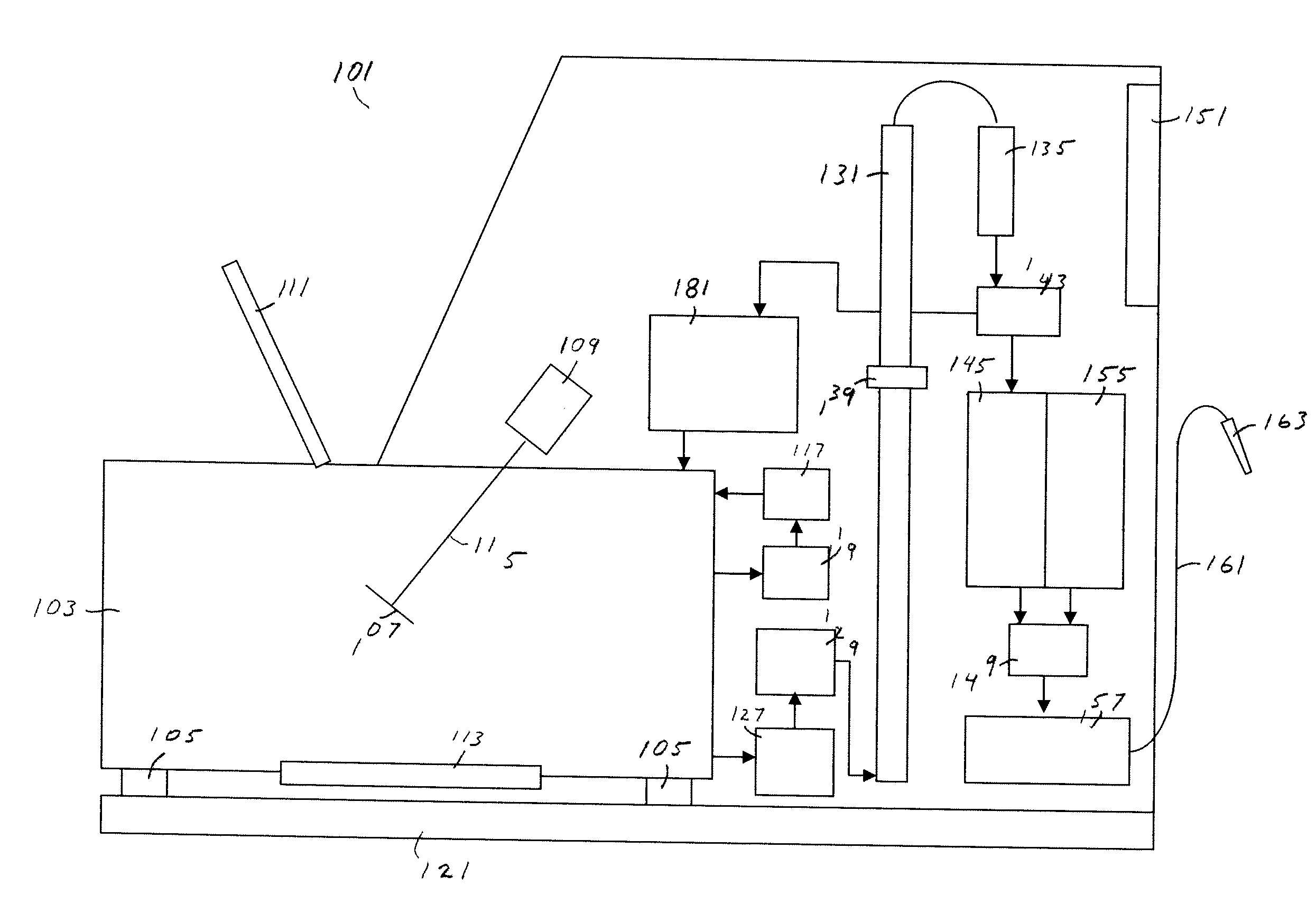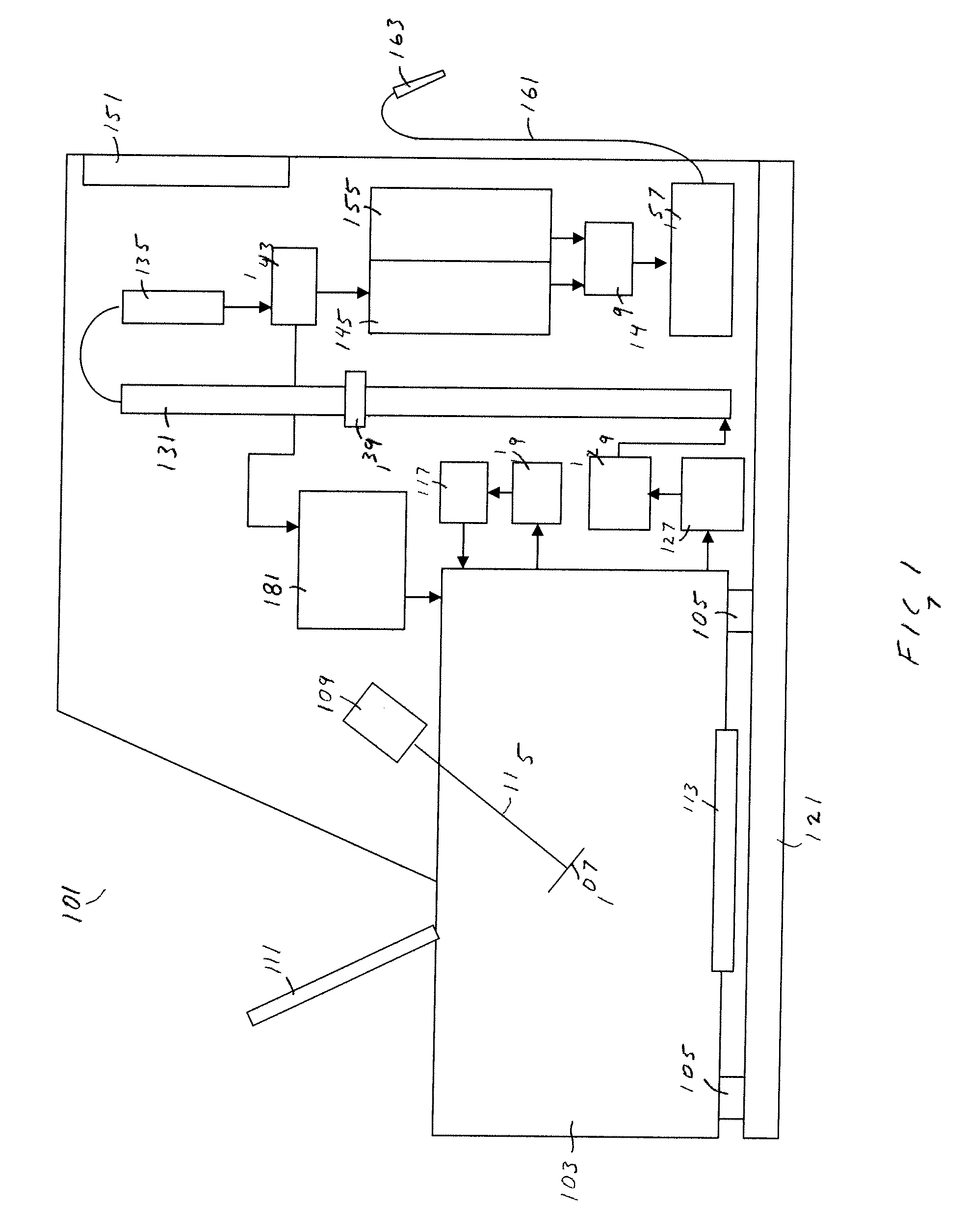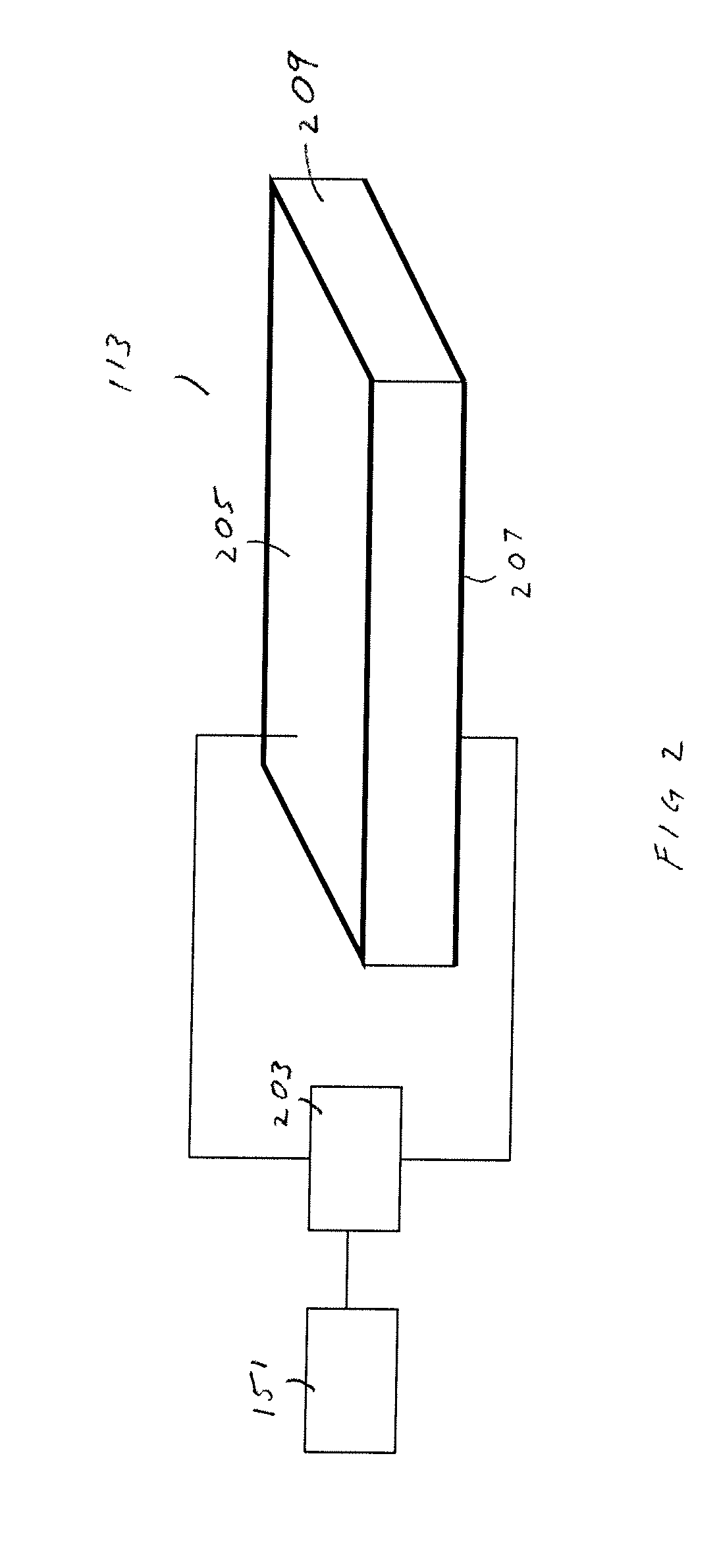Micro refinery system for ethanol production
a technology of ethanol refinery and ethanol, which is applied in the direction of specific use of bioreactors/fermenters, biomass after-treatment, biochemical apparatus and processes, etc., can solve the problem of large-scale machinery needed for production, and achieve energy-saving, high-purity ethanol, and prevent damage to the membrane from hot vapors
- Summary
- Abstract
- Description
- Claims
- Application Information
AI Technical Summary
Benefits of technology
Problems solved by technology
Method used
Image
Examples
Embodiment Construction
[0023]The present invention is for a micro ethanol refinery system that functions as a sugar fermentation tank to produce ethanol. The micro ethanol refinery system processes discarded sugar and starch matter as well as alcohol in the tank that feeds a distillation system for conversion into ethanol.
[0024]With reference to FIG. 1, a diagram of the micro ethanol refinery system 101 and system components is illustrated. In an embodiment, the system 101 includes a frame 121 that is supported by a plurality of locking casters which allow the system to be rolled to the desired location and locked in place by locking the rotation of the casters. The frame 121 may be adjustable so that the casters can be retracted and the frame can rest on legs when moved to the desired location. The castors or legs may also be adjustable in length so that each can be adjusted to equally support the frame and the system can be adapted for uneven surfaces. In other embodiments, the frame 121 can be placed d...
PUM
 Login to View More
Login to View More Abstract
Description
Claims
Application Information
 Login to View More
Login to View More - R&D
- Intellectual Property
- Life Sciences
- Materials
- Tech Scout
- Unparalleled Data Quality
- Higher Quality Content
- 60% Fewer Hallucinations
Browse by: Latest US Patents, China's latest patents, Technical Efficacy Thesaurus, Application Domain, Technology Topic, Popular Technical Reports.
© 2025 PatSnap. All rights reserved.Legal|Privacy policy|Modern Slavery Act Transparency Statement|Sitemap|About US| Contact US: help@patsnap.com



